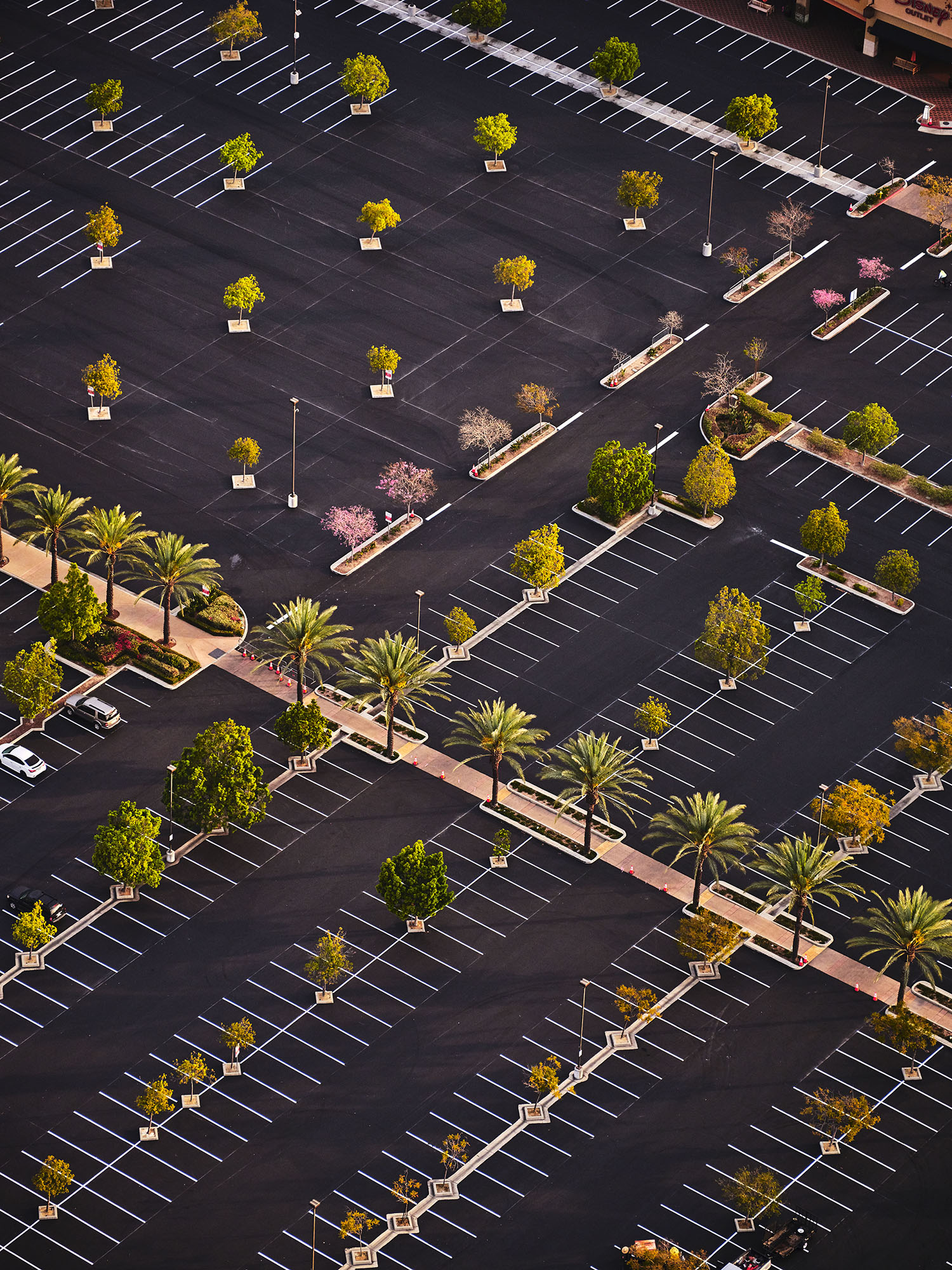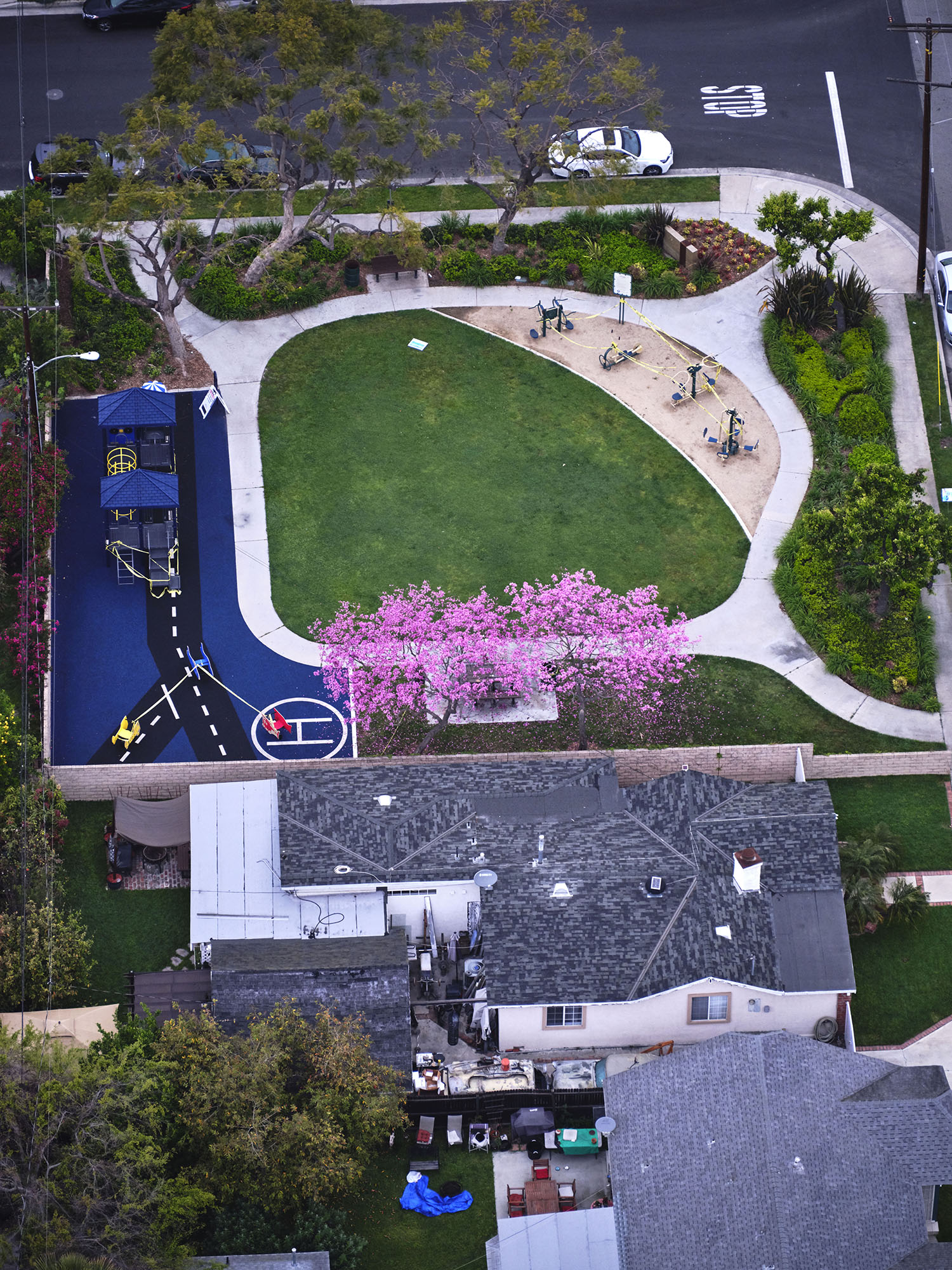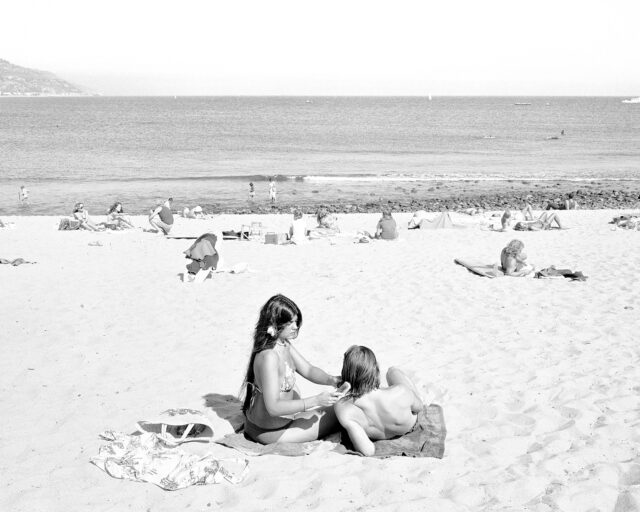Los Angeles without Angelenos
When Los Angeles issued shelter-in-place orders on March 15, due to the coronavirus crisis, something really changed about this car-centric city. The streets were suddenly empty. It had just rained, a situation that created some of the best air quality in decades, the skies crisply clear and the hills and golf courses spring verdant, while the parking-lot trees were lush and blooming. The highway calm was deceptively serene—travel that ordinarily would take time, patience, and the company of a lengthy podcast was navigable in minutes.
Maria Wyeth, the depressive, freeway-addicted antiheroine of Joan Didion’s 1970 novel Play It As It Lays, would have had a field day going nowhere even faster. When you can move freely, the terrain takes on different qualities, our perception of space and time shifts.
There’s even more latitude when you head upwards.
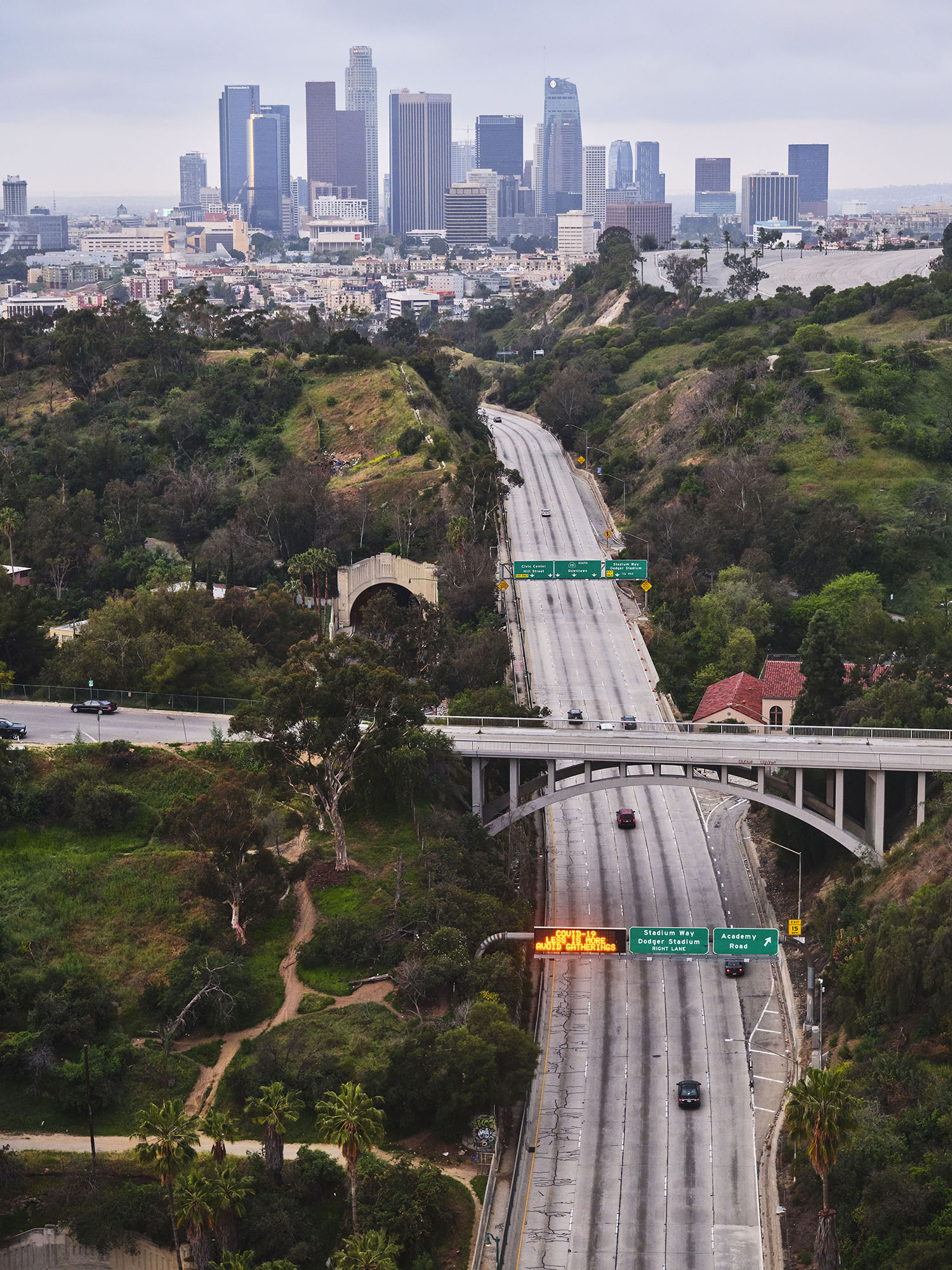
Photographer Pascal Shirley had the inspiration—and the right connection to a pilot, Alex Freidin—to seize the moment and survey the initial dazed shock of catastrophe. In a series of midmorning helicopter flights, Shirley went up with his 100-megapixel medium-format camera in those first days of lockdown. His pictures of sunny abandonment are documents of a deceptively low-impact disaster, and full of poetic foreboding.
Aerial photography, of course, exudes greatness in its sweep. In LA, the helicopter is the vehicle that reports traffic or chases criminals through neighborhoods on sunny afternoons. From the ground, this is all ordinary and perhaps frayed, trash cans on the curb, decently tended yards, but looking down from the heights, those streets look so clean and geometrically contained.
Skimming the sky above downtown provides a full daylight view of empty lanes on the highway headed downtown. The electronic sign offers a message of minimalism: “COVID-19 / LESS IS MORE / AVOID GATHERINGS.” Nearby, there is a curving line of cars arcing through the Dodger Stadium parking lot, as passengers wait for a drive-through coronavirus test. Orange traffic cones, like little pushpin markers, create a flimsy but heeded route. It’s as if the vehicles were getting in formation for a Busby Berkeley car commercial. But this is serious. There are subtle skids from failed doughnut spins and the thin lines that demarcate parking spots.

Culture is on hold, perhaps imperiled. Wilshire Boulevard right in front of the Los Angeles County Museum of Art is desolate and cluttered with parallel lines—street markings, palm trees, and Chris Burden’s iconic public sculpture Urban Light (2008), which appears as an orderly cluster of spindles. There are no group selfies in action at this tourist magnet, just one lone man at the corner of the piece; perhaps he’s a security guard dispatched for this unique moment. To the right, you can see a patch of construction fence—old structures would be demolished a few days later to make room for an expensive and controversial new building. Spectators were few.
Up on the Sunset Strip, the sun still shines on building-size billboards for big movies that won’t be released anytime soon, at least not in theaters. The Hollywood Bowl is empty, as it will remain, for the first time in almost a hundred years, for a full summer season. In less identifiable locations, recently painted parking lots for malls and workplaces are geometric abstractions punctuated by blooming trees.
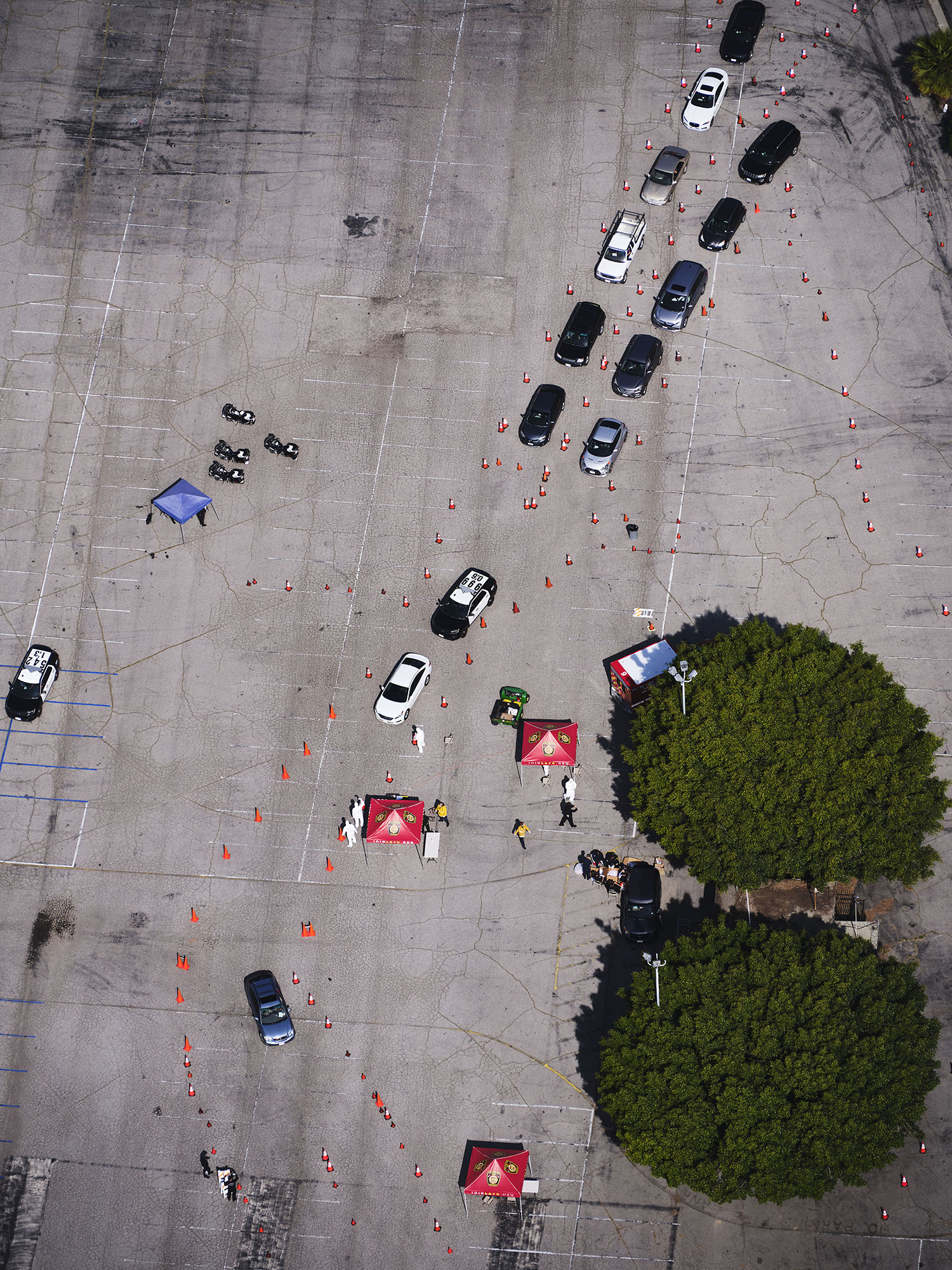
These places follow architecture critic Reyner Banham’s famous “four ecologies” of the city: the freeway system, Autopia, like an attraction at Disneyland (a site that Shirley and Freidin also zoomed over); the mansion-studded Foothills; the flat, boring neighborhoods dubbed The Plains of Id; and the beaches and beach towns of Surfurbia.
Headed towards the ocean, the beach at Santa Monica is a smooth, blank canvas for the shadows of clouds and the helicopter—its whirling blades register a tiny, soft blur on the sand. And out to sea, four cruise ships sit, socially distanced, like cats lounging on a hazy morning. Only they’re now emblems of mortality, of endangered economics, leisure, and life itself.
The sinister, sublime nature of these photographs is unlike the eco-horror overhead views of Edward Burtynsky’s Nickel Tailings (1996) and strip mines. Neither is it Andreas Gursky or Florian Maier-Aichen digitally removing things in order to amplify the oddness of contemporary life. Shirley described the experience of flying over the city as something akin to “watching a movie.” Though, as Cardi B so succinctly put the pandemic era, this shit is real.

